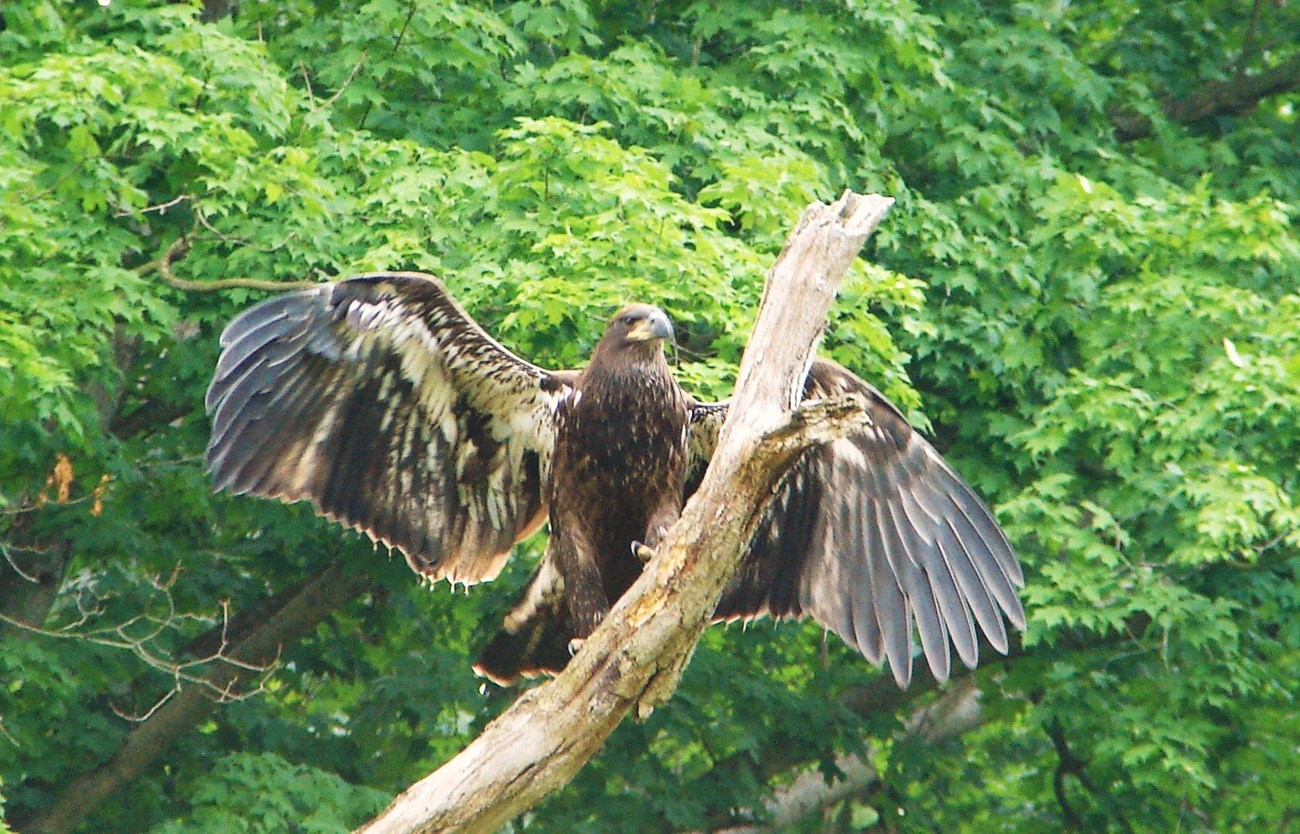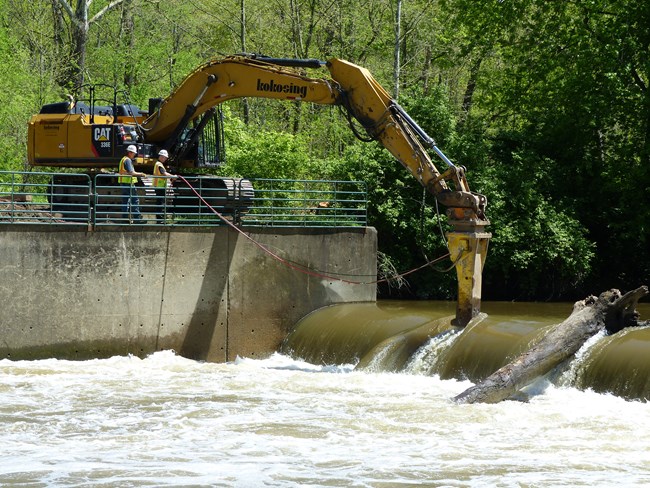Last updated: December 21, 2022
Article
How a National Park Helps the Cuyahoga Recover

© Vaughn Stitt
In 2007, something remarkable happened in Cuyahoga Valley National Park. A young bald eagle took flight from its nest along the Cuyahoga River. It was the first successful nest ever recorded in Cuyahoga Valley. The eaglet grew up eating fish from the Cuyahoga River. Years earlier, pollution meant that no fish could survive. Wildlife that eats fish could also not survive. The river still has room to improve. However, an eaglet taking flight signals how far its recovery has come.
In 1969, a river fire in Cleveland showed the poor condition of the river to the world. The fire made its way into the national news and public dialog about our treatment of waterways. Even today, it is a key moment in the environmental movement.
Many things have happened to improve the river. Cuyahoga Valley National Park is part of the story. In 1974, President Ford signed legislation to create the park a few miles upstream from the fire location. The park protects 22 miles of the river, nearly a quarter of its length.
In 1974, Cuyahoga Valley National Park was unlike it is today. Mining, farming, and development had left thousands of acres without vegetation. Exposed soils eroded into the river, creating problems downstream. Early park projects replanted those sites. Other projects cleaned up hazardous waste dumps.
Today, the National Park Service and its partners restore habitats that protect the river. Wetlands and forest are priorities. Wetlands act like sponges, absorbing and filtering storm water. Over 1,500 wetlands occur in the park. Forests shade waterways, preventing them from overheating. Leaves slow down rain, giving soil a better chance of soaking it up. Where trees come close to the water’s edge, their roots stabilize the banks.

NPS/Arrye Rosser
Restoring the natural flow of water is another priority. Dam removal is the most visible work. Without dams, it is easier for fish to move through the river system. Natural flow also improves the river bottom habitat for insects and other small animals.
The Cuyahoga River has had numerous dams. The last ones in Cuyahoga Valley were located near Station Road Bridge Trailhead in Brecksville. Canal builders constructed the wooden Pinery Feeder Dam in 1827 to supply water to the Ohio & Erie Canal. In 1952, the concrete Brecksville Diversion Dam was built immediately downstream. The Ohio Environmental Protection Agency and its partners, including the national park, removed both dams in 2020. Future projects will restore river banks and floodplains upstream from the dam.
Since 2007 more than a dozen eaglets have flown from the valley nest. Their survival is one reason why the recovery of the river and the protection offered by Cuyahoga Valley National Park matters. What other reasons are important to you?
